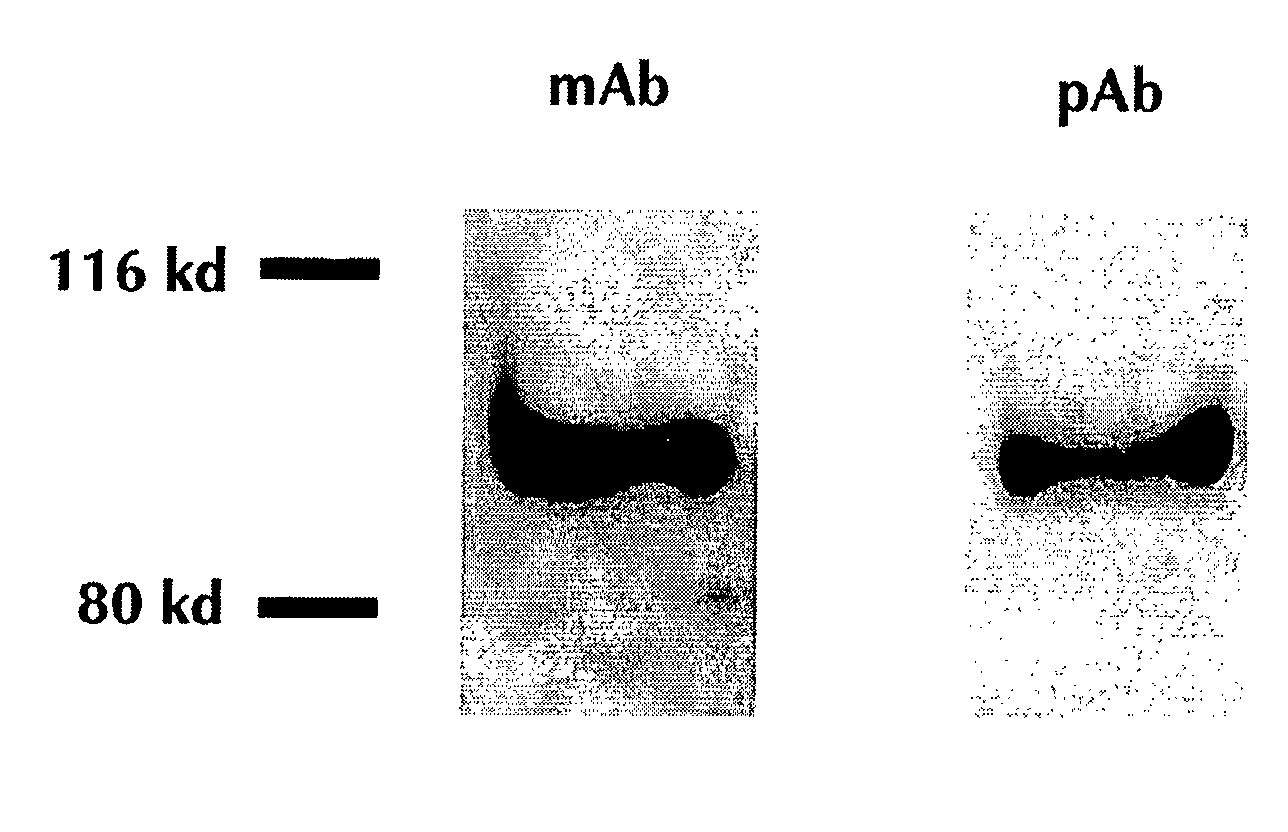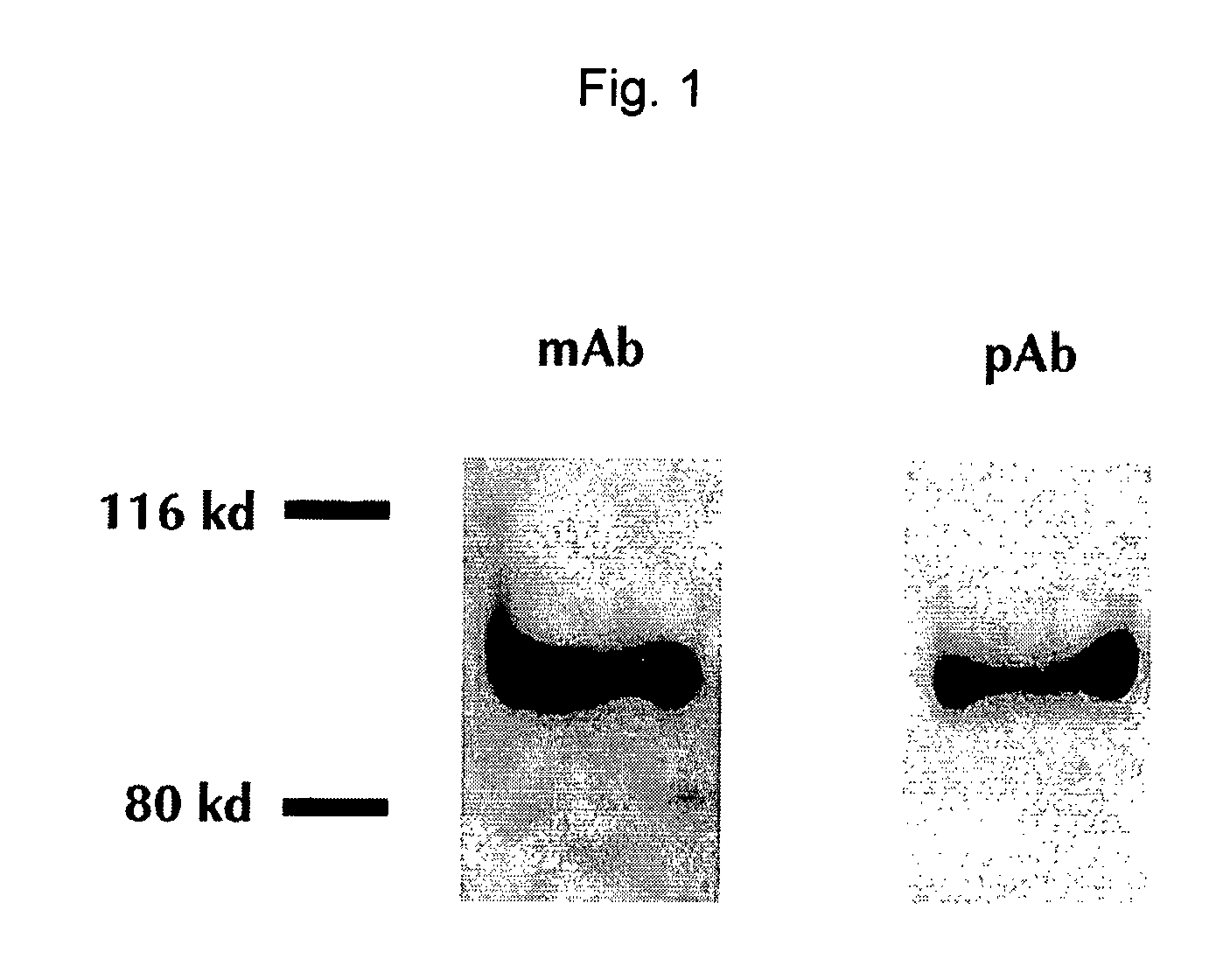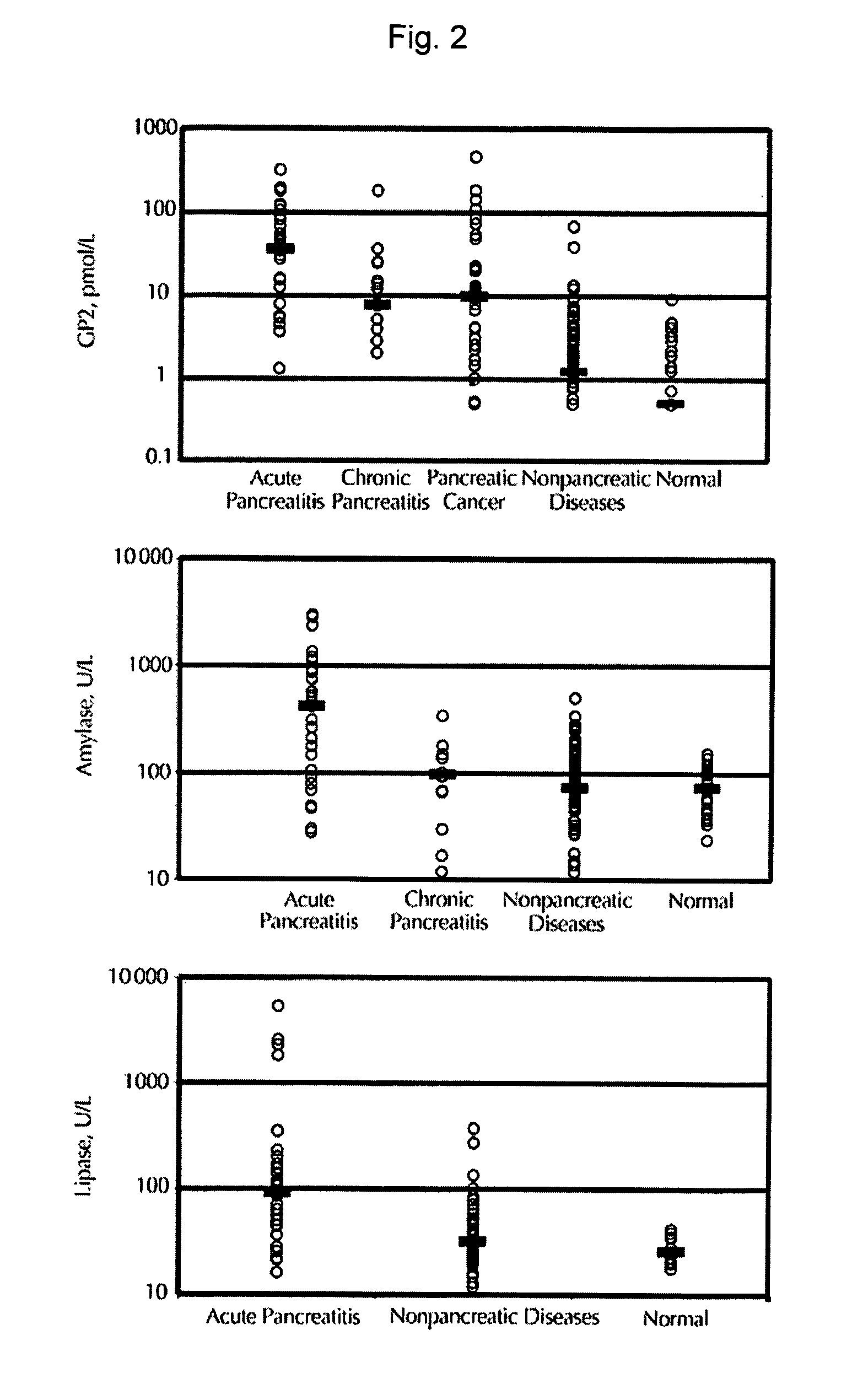Methods and Compositions for Detecting Pancreatic Disease
a technology of pancreatic cancer and composition, applied in the field of methods and compositions for detecting pancreatic cancer, can solve the problems of erroneous diagnosis, no specificity of conventional diagnostic tests, and complicated diagnosis of pancreatic cancer
- Summary
- Abstract
- Description
- Claims
- Application Information
AI Technical Summary
Benefits of technology
Problems solved by technology
Method used
Image
Examples
example 1
Development of the GP2 Assay
[0119] An ELISA assay was developed that utilized two different anti-human GP2 antibodies. The specificity of the antibodies used was determined using protein immunoprecipitation and immunoblotting of human pancreatic secretions, which resulted in a single 97 KDa band consistent with the expected mass of human GP2 (FIG. 1). The developed ELISA assay was linear over a range of at least 0.5-60.6 pmol / L when examined using purified recombinant GP2.
[0120] The linearity of the assay was established using purified recombinant human GP2. GP2 levels in normal controls were established using two control populations. Plasma from one group was derived from individuals with no prior significant medical history. A second control group was derived from patients seen at the hospital for reasons other than pancreatic disease. No significant difference in GP2 levels was observed between the two groups.
example 2
Determination of GP2 Plasma Levels in Different Pancreatic Diseases
[0121] The assay for human GP2 was tested in a patient population with known pancreatic disease. All three common pancreatic diseases were examined with the GP2 assay.
[0122] Human subjects recruited into the study included 31 patients with acute pancreatitis, 16 with chronic pancreatitis, 36 with pancreatic cancer, 113 with non-pancreatic diseases, and 30 normal healthy controls (FIG. 2, Table 1). For acute pancreatitis, the etiology was attributed to gallstone disease in 36% of patients and alcohol in 19% of patients (Table 2). No cause was found in 30% of acute pancreatitis patients. For acute pancreatitis, 29 out of the 31 total patients exhibited mild disease by clinical and radiologic criteria. Causes for chronic pancreatitis was determined to be alcohol (75%), gallstone (13%), and cytomegalovirus (6%). No etiology was determined for one patient (6%) with chronic pancreatitis.
[0123] The median GP2 level in th...
example 3
Amylase Determinations for Different Pancreatic Disease
[0126] The median serum amylase level for 25 normal healthy controls was not significantly different from the 96 subjects with non-pancreatic diseases (FIG. 2, Table 3). Amylase levels were determined for all 31 patients with acute pancreatitis, which showed a median significantly higher than the controls (FIG. 2, Table 3). Amylase levels were also available for 14 out of 16 patients with chronic pancreatitis. In contrast to GP2, amylase levels in chronic pancreatitis were not significantly different from normal controls.
PUM
 Login to View More
Login to View More Abstract
Description
Claims
Application Information
 Login to View More
Login to View More - R&D
- Intellectual Property
- Life Sciences
- Materials
- Tech Scout
- Unparalleled Data Quality
- Higher Quality Content
- 60% Fewer Hallucinations
Browse by: Latest US Patents, China's latest patents, Technical Efficacy Thesaurus, Application Domain, Technology Topic, Popular Technical Reports.
© 2025 PatSnap. All rights reserved.Legal|Privacy policy|Modern Slavery Act Transparency Statement|Sitemap|About US| Contact US: help@patsnap.com



